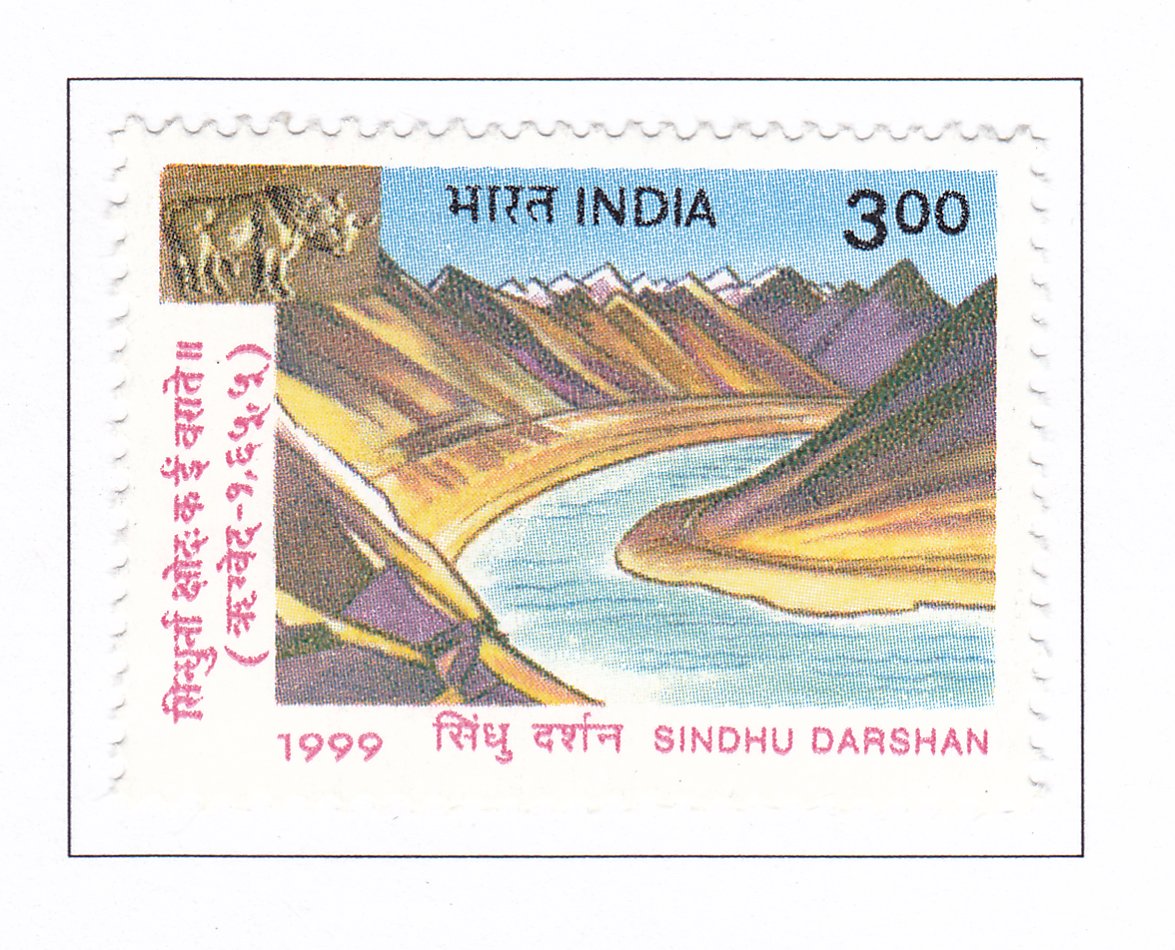Sindhu Darshan Festival

Technical Data
| Date of Issue | July 28, 1999 |
|---|---|
| Denomination | Rs. 3 |
| Quantity | 1,400,000 |
| Perforation | comb 13½ x 13 |
| Printer | Security Printing Press, Nashik |
| Watermark | No Watermark |
| Colors | Multicolor |
| Catalog Codes |
Michel IN 1692 Stamp Number IN 1753 Yvert et Tellier IN 1459 Stanley Gibbons IN 1855 |
| Themes | Festivals | Landscapes | Rivers |
Table of Contents
Commemorative Stamp: Sindhu (Indus) River
Design Elements:
- Central Imagery: The stamp features a stunning landscape of the upper reaches of the Sindhu River, showcasing the rugged and majestic terrain of Ladakh.
- Inset Detail: An inset image of the famous “Vrishabha” (bull) seal of the Indus Valley Civilization, symbolizing the ancient heritage associated with the river.
- Text Elements: A line from the ‘Rig Veda’ describing the Sindhu River, highlighting its revered status in ancient Indian literature.
- Background Motif: The design incorporates subtle patterns reflecting the cultural and topographical beauty of the Sindhu region, blending natural and historical elements.
Cultural and Historical Significance:
- Ancient Heritage: The Sindhu River is central to the history of the Indus Valley Civilization, one of the world’s earliest urban cultures. Its mention in the ‘Rig Veda’ and other ancient texts underscores its importance in the cultural and historical narrative of India.
- Geographical Importance: As one of the longest rivers in the world, the Sindhu (Indus) River has played a crucial role in the development of the civilizations along its banks, shaping the geography and culture of the region.
Usage:
- Educational Purpose: The stamp educates the public about the historical and cultural significance of the Sindhu River, connecting it to India’s ancient civilization and ongoing cultural heritage.
- Commemorative Collectible: It serves as a collectible item for philatelists and those interested in Indian history and geography, marking the Sindhu Darshan Festival.
First Day Cover Design:
- Visual Representation: The First Day Cover features the same landscape and inset elements as the stamp, with additional inscriptions of the hymn (mantra) chanted by Buddhists in the region, symbolizing spiritual connection and reverence.
- Cultural Focus: Emphasizes the celebration of the Sindhu as a symbol of ethnic diversity and communal harmony, along with the natural and cultural beauty of Ladakh.
Significance:
- Cultural Bond: The stamp and First Day Cover celebrate the Sindhu River as a symbol of India’s rich and enduring cultural heritage, highlighting its role in the nation’s history and its continuing significance in promoting unity and understanding.
- Historical Connection: By featuring the Indus Valley Civilization seal and ancient literary references, the commemorative items honor the deep historical roots of the river and its impact on Indian civilization.
